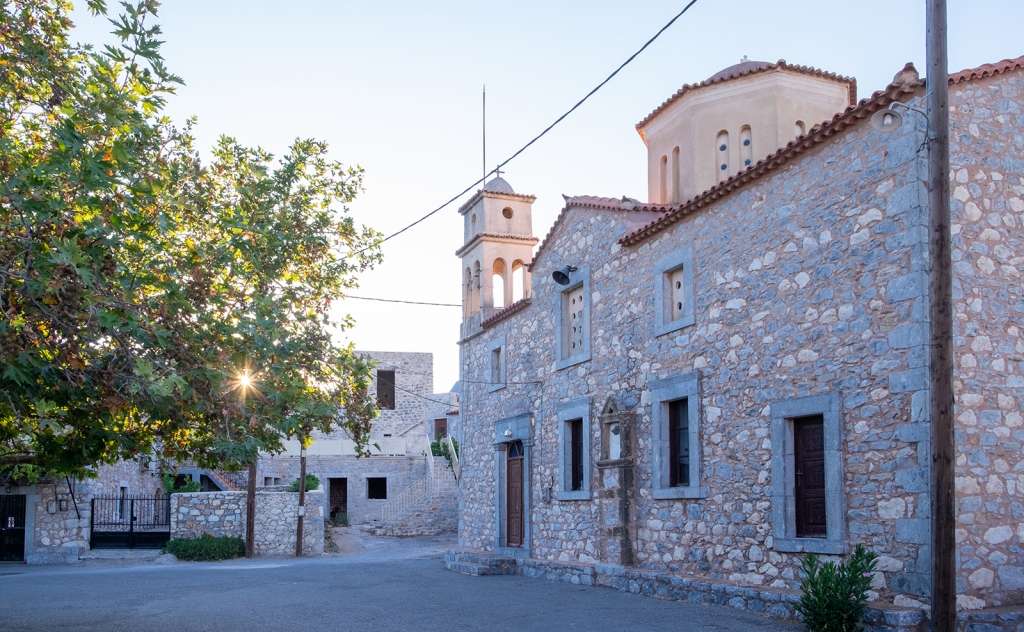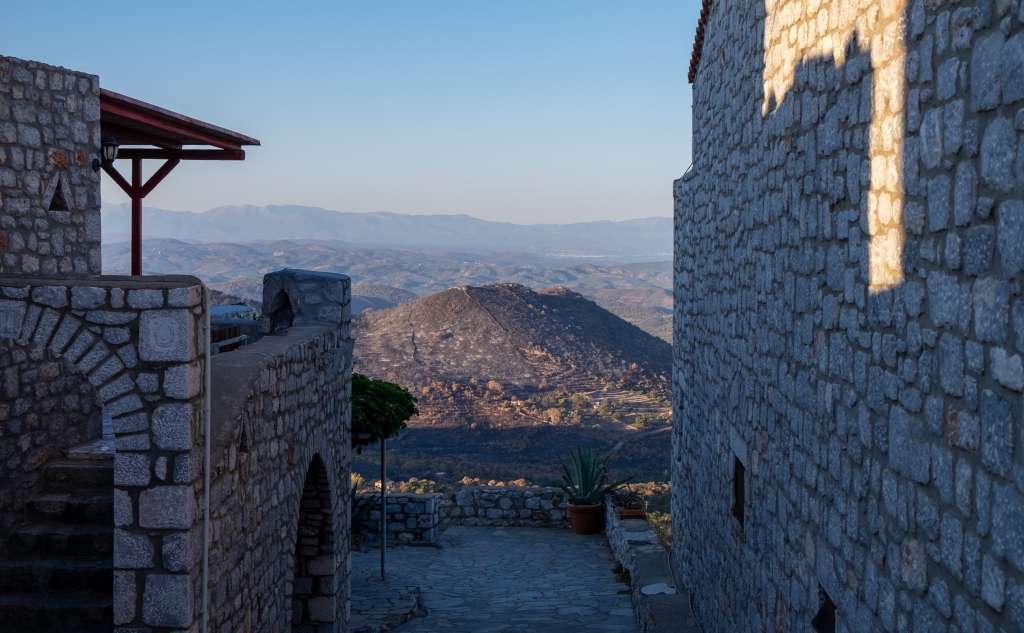





The traditional village of Drosopigi is built at an altitude of 400 metres and has about 50 permanent residents. It is only 10 km from Areopolis and 20 km from Gythio. It consists of stone tower houses and belongs to the preserved settlements. Due to the village's location, the view of the Laconic gulf is unique.
It used to be called Tserova and was first mentioned in 1554. Most likely, the name comes from the ancient word "arrava", which means gate - door or from the word heravos, which means gap, the opening of the earth. After the Latinization of various regions, the name Ceruva emerged. Pausanias and Ciriaco de ’Pizzicolli (forerunner of touring), also known as Kyriakos Agonitis, passed through Cerova. There is also the possibility that the name came from the Bulgarian root cer ("oak"), as all the surrounding slopes are overgrown with oaks. Opposite, on the west side of the village (at the top of the hill), the ruined Byzantine town of Karyoupolis can be found, while on the north side, visitors can see the small settlement of Panagitsa. From Cerova, attempts were made twice to occupy Mani, one in 1779 by Hatzi Osman and one in 1826 by Ibrahim. From the old village (which current inhabitants call Paleokotrona), only ruins are left that testify to its glorious history. We do not know the exact date of the transfer of the village, but it may have taken place during the 18th century.
Near the spring, there is a rare species of butterfly. These butterflies are yellow when they are on the leaves but turn red when they fly. Unfortunately, after the fire of 2006, there are only very few left.
At the western entrance of Drosopigi, visitors can visit the church of the Assumption of the Virgin Mary. It is an old one-roomed church, where the hagiographies inside date back to the 18th century. They were probably created in 1768 by members of the Klirodetis family of hagiographers, who were active in the broader area. To the east of the village, there is the chapel of Agia Eleousa, in which the frescoes were painted in 1853. The chapel stands out for its magnificent iconostasis.
In the central square of the village, with the characteristic, big plane tree, the church of Agios Nikolaos is impressive. There is only one tavern-cafe that serves good local recipes. At Drosopigi, visitors can also see the restored olive press of the village and learn the traditional way of processing olives.
The nearest beach is 8 km from the village. It is the beach of Skoutari with its endless sandy beach and crystal-clear waters. Finally, at Drosopigi, there is a traditional guest house made of stone and wood, with beautiful views of the mountain and the sea.